Students are advised to solve Telangana SSC Board Question Papers for Class 10 Social Science 2016 Paper 1 solutions to write the exam confidently. It is an important resource as it gives a complete understanding of the exam paper, weightage of marks, difficulty level, etc. By solving the previous year question papers students will get to know on which topic they should concentrate more. The previous year question papers will help students to evaluate their knowledge and improve their learning.
Social Science previous year question papers of 2016 paper 1 help students to revise the entire syllabus just before the exam. The solutions of the question papers are accurately solved by our subject professionals who have deep knowledge in the field of Social Science. So, students should start their exam preparation by solving the previous year question papers.
Telangana SSC or Class 10 Social Science Question Paper 2016 Paper 1 with Answers – Free Download
Download Telangana SSC 2016 Social Science Question Paper 1
Download Telangana SSC 2016 Social Science Question Paper 1 With Solutions
Telangana Class 10 Social Science Question Paper 1 With Solution 2016
1. Give examples for Himalayan hill stations.
Answer: Some main hill stations of the Himalayas are as follows:
- Gulmarg and Sonamarg.
- Srinagar.
- Ladakh.
- Shimla.
- Kullu.
- Manali.
- Dharamsala.
2. What were the conditions set by Maharashtra government for the selection of villages under Adarsh Gram Yojana?
Answer: The conditions set by Maharashtra government for the selection of villages under Adarsh Gram Yojana are:
- Each MP should adopt a village of his choice, which should not be his own or his in-laws.
- Villages should be adopted not from urban constituencies but from nearby rural areas.
- Emphasis on empowering the poor families to get rid of poverty by implementing a proper plan for every identified gram panchayat.
3. Who are called as the Labour force?
Answer: The labour force is the number of people who are employed plus the unemployed who are looking for work.
Observe the following table and answer the questions 4, 5, 6 and 7.
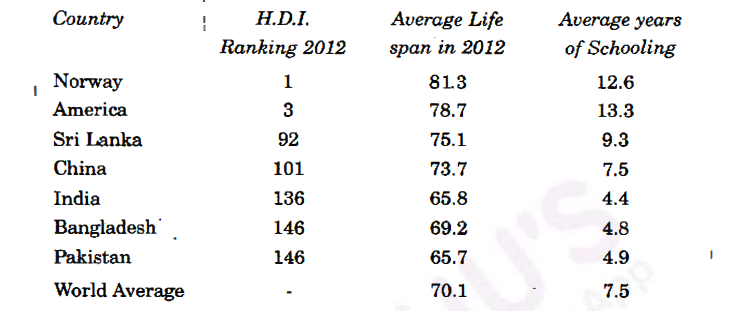
4. Which two countries have more average schooling years?
Answer: Norway and America
5. Which two Asian countries have better HDI rank than that of India?
Answer: China and Sri Lanka
6. Which countries are lacking behind the average life expectancy of World?
Answer: India, Bangladesh and Pakistan
7. What are the reasons for having less average schooling in India, Bangladesh and Pakistan?
Answer: The reasons for having less average schooling in India, Bangladesh and Pakistan are:
- Child labour in India is a notable problem.
- This education system is flawed and does not provide enough capabilities to the student as there is no importance given to extracurriculars.
- Poverty is also one of the cause. Due to unavailability of food children have to go for work instead of school.
- India, Pakistan and Bangladesh have comparatively poorer education systems than other western countries.
8. Mention the factors of production.
Answer: Factors of production is an economic term that describes the inputs that are used in the production of goods or services in order to make an economic profit. The factors of production include land, labour, capital and entrepreneurship. The production factors also includes management, machines, materials, and knowledge has recently been talked about as a potential new factor of production.
9. Categorise the drainage system based on its origin.
Answer: Depending upon the origin of rivers two broad drainage systems of India are generally recognised:
(a) The Himalayan rivers including the Indus, the Ganga, the Brahmaputra and their tributaries
(b) The Peninsular rivers which include along with their tributaries, a large number of rivers such as the Mahanadi, the Godavari, the Krishna, the Cauvery, the Narmada and the Tapi.
10. Observe below ‘Pie’ chart and analyse it.
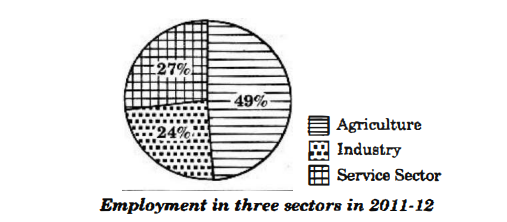
Answer: This graph throws light on the employment of 3 important sectors of economy. Agriculture sector ranks 1st in terms of share of the number of people employed. Almost half of the employment is provided by the Agriculture sector. The Service sector ranks 2nd in employment and the industry sector ranks 3rd in employment. The above percentages are for the year 2011-12. There is a vast difference between Agriculture and other 2 sectors in terms of contribution to employment. However the difference in employment contribution between Industry and Service sector is less. Industry sector employs 24% of the employed people, whereas Services sector employs 27% of the employed people.
11. Draw outline map of Telangana.
Answer: Activity to be done by yourself
12. Create a pamphlet on “Prevention of Migration.”
Answer: Prevention of Migration:
- No fear from workload
- Need for challenging, creative work
- Recognize and make use of personal skills, competencies
- Effective information flow
- Evaluation, recognition of work, feed-back
- Career development based on real performance
- To stimulate professional activities
- Flexible working time
- Programmes to better atmosphere
13. Write two slogans on enlightening people regarding “environment protection.”
Answer: Two slogans are:
- “Save Water Save Life”
- “No Nation Without Plants”
14. What are the differences between Organized sector and Unorganized sector?
OR
Write the advantages and disadvantages of Multinational Companies?
Answer: The differences between Organized sector and Unorganized sector are:
Organized Sector:
Job security is present; work is assured.
Workers are expected to work for a fixed number of hours and are paid overtime if they work overtime.
They are registered by the government and have to follow many rules and regulations such as the Factories Act, Minimum Wages Act, etc.
They get benefits such as paid leave, payment during holidays, provident fund, etc.
They also get medical benefits, drinking water at the workplace and a safe working environment.
They get pension when they retire
Unorganized Sector:
No security of employment, they can lose the job anytime.
They can be worked overtime without compensation.
They are not registered by the government, and they usually do not comply with the rules and regulations.
No additional benefits at work.
They are usually hawkers, labourers and people engaged in contract work.
They do not get pension when they retire.
Answer: The advantages and disadvantages of Multinational Companies are:
Advantages
- MNC’s create employment opportunities in the host country.
- MNC’s create more foreign investment in the host countries.
- MNC’s create greater choices for consumers.
- MNC’s improves quality of gods and services and decreases their prices as well.
- It leads to the transfer of technology and thus increases industrial development in the host country.
- MNC’s break monopolies and create greater competition in the market.
Disadvantages
- It leads to the exploitation of labour force as MNC’s mostly hired labours at cheap rates in host countries.
- MNC create problems for local business or companies and industries.
- MNC’s may pose a threat to the economical and political sovereignty of the host country.
- MNC’s also pose a threat to the natural resources of a host country.
15. Read the following paragraph and write your opinion on it.
We are already experiencing the negative consequences of rapid economic growth on several fronts – the problem of groundwater and pesticides being two stark examples. We have several thousands of communities living off the environment. To destroy the environment means to destroy these communities.
Answer: Overexploitation of water resources is the primary reason for water scarcity in most of the cases. Water overexploitation happens when there is unequal access and excessive use of water among different social groups. Unplanned expansion of cities and growing population along with it causes water scarcity. Irrigation is the major water guzzler. To meet the growing demands of the large population, food production has to be increased. Another reason for water scarcity is the bad quality of water, it happens due to pollution of water caused by pesticides, chemicals, fertilisers, industrial wastes; thus making it dangerous for human consumption. India has a huge tribal population. They depend on the forests or environment for their livelihood as they are cut off from mainstream society. Destruction of the environment will destroy their livelihood and ultimately destroy these communities.
OR
Read the following paragraph and write your opinion on it.
Today, this is the major source of water for people. When there is so much extraction, it affects others in connected areas. It affects the stock of water that would be available for future generations. Therefore, one can’t allow individual landowners to extract as much water as they wish from their land. There should be some restrictions. These restrictions will be acceptable if we first delink the connection· between ownership of land and water drawn from the underground system through tube-wells on the land.
Answer: In villages the farmers have their own tube wells to extract groundwater for irrigation purposes. In India irrigation is the major source of water consumption. This has led to massive depletion of groundwater. Groundwater is a renewable source if it is allowed to follow its hydrological cycle to replenish itself. However, due to overexploitation of groundwater i.e. using more water than required has led to depletion of groundwater in villages. Since groundwater is a precious resource, the Government has to come up with measures to restrict its unbridled use.
In the cities due to massive expansion due to migration of people in search of jobs, education and employment opportunities, there is a mushrooming of housing societies. To meet the water requirements of hundreds and thousands of people living in these housing societies, they have their own groundwater pumping devices, thereby greatly depleting the groundwater levels, without giving an opportunity for replenishment of groundwater as per its hydrological cycle. Hence, the civic administration has to put in rules to regulate the extraction of groundwater.
16. What is the influence on society when female percentage decreases in sex ratio?
OR
What measures should be taken to create employment in your area?
Answer: The number of males per 100 females is called Sex-Ratio. The Current Sex-Ratio in 2020 is about 176 males per 100 female.
So, if the condition is like this, what are the consequences?
- Domination of Males over Females
- Working Female percentage will reduce causing the Economic Crisis.
- Gender Bias
- Female Foeticide rate will increase
- Death Rate will be alarming
- Children who are the Citizens of tomorrow may grow up with a mind-set that “Women are weak”, “Gender Bias”, etcetera.
- Domestic Violence towards women will increase.
- Women will be pushed back in all the classes or sectors of society. Destroying their confidence as well as the future of the world.
Answer: The challenges for employment in a particular area will be completely different in a vast country like India. Hence students are advised to identify the challenges for employment in their areas and explore the measures that need to be taken to address the issue.
17. Locate the following in the given map of India.
(i) Rajasthan
(ii) River Krishna
(iii)Peak of K2
(iv) Andaman Nicobar
OR
(i) West Bengal
(ii) River Ganga
(iii) Nilgiri Hills
(iv) Mount Everest
Answer: Activity to be done by yourself.
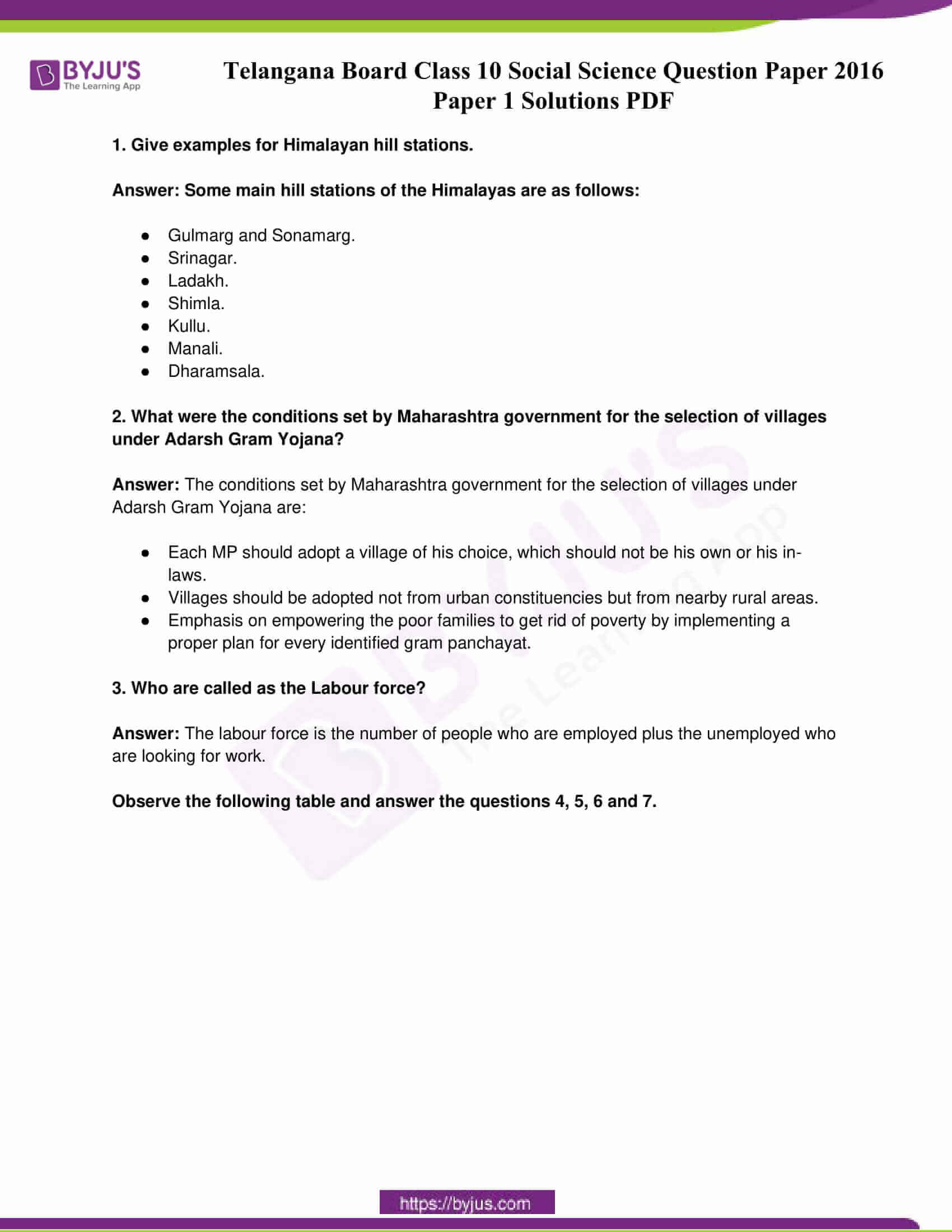
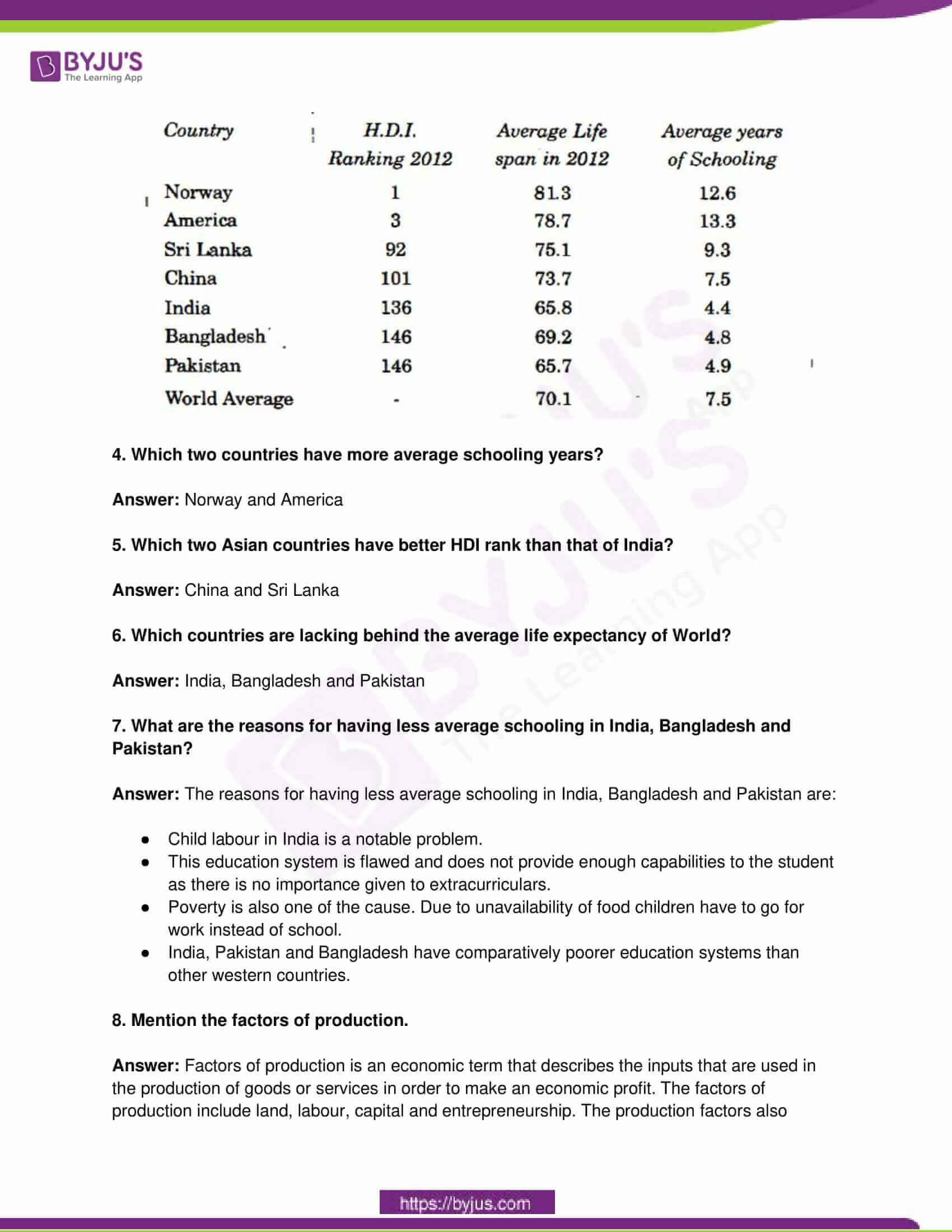
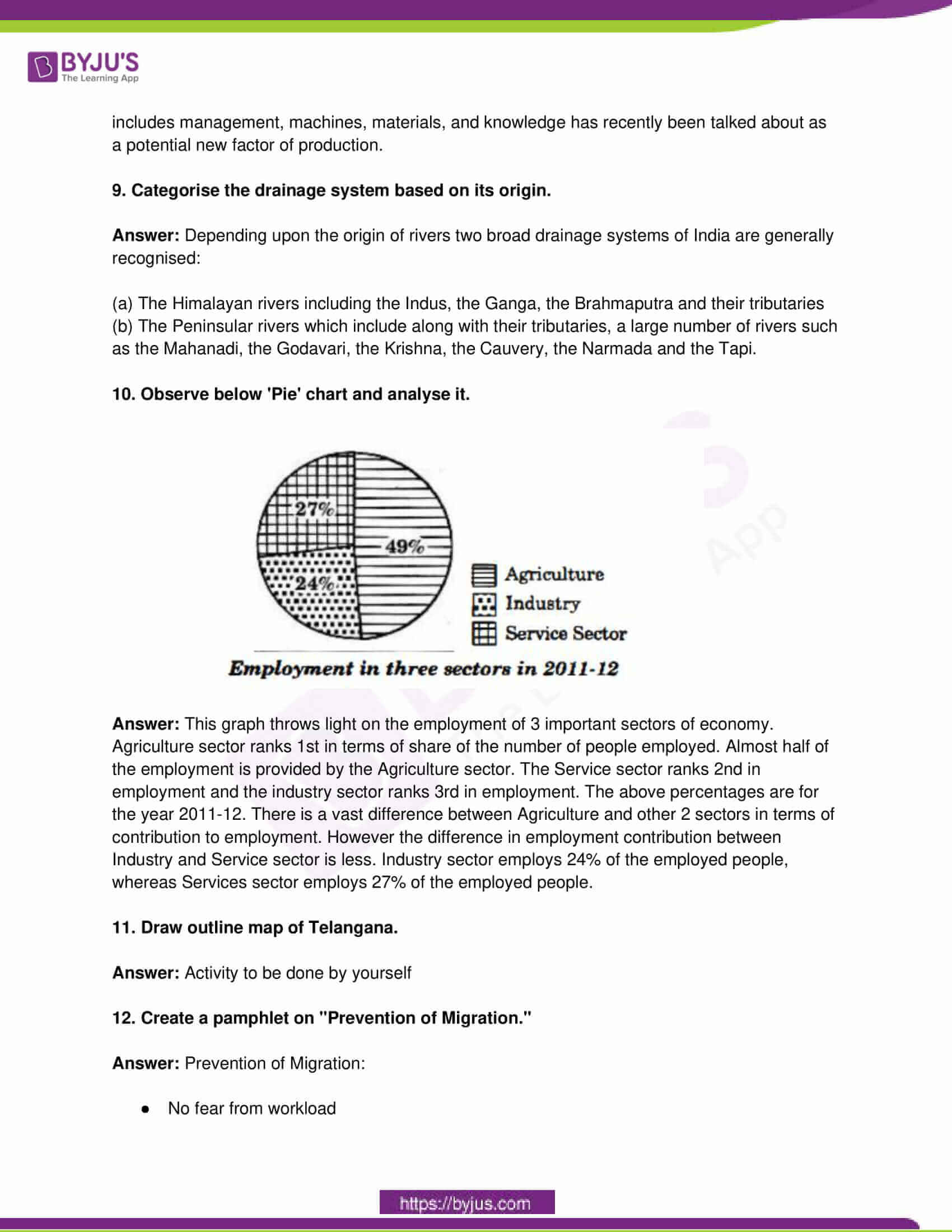
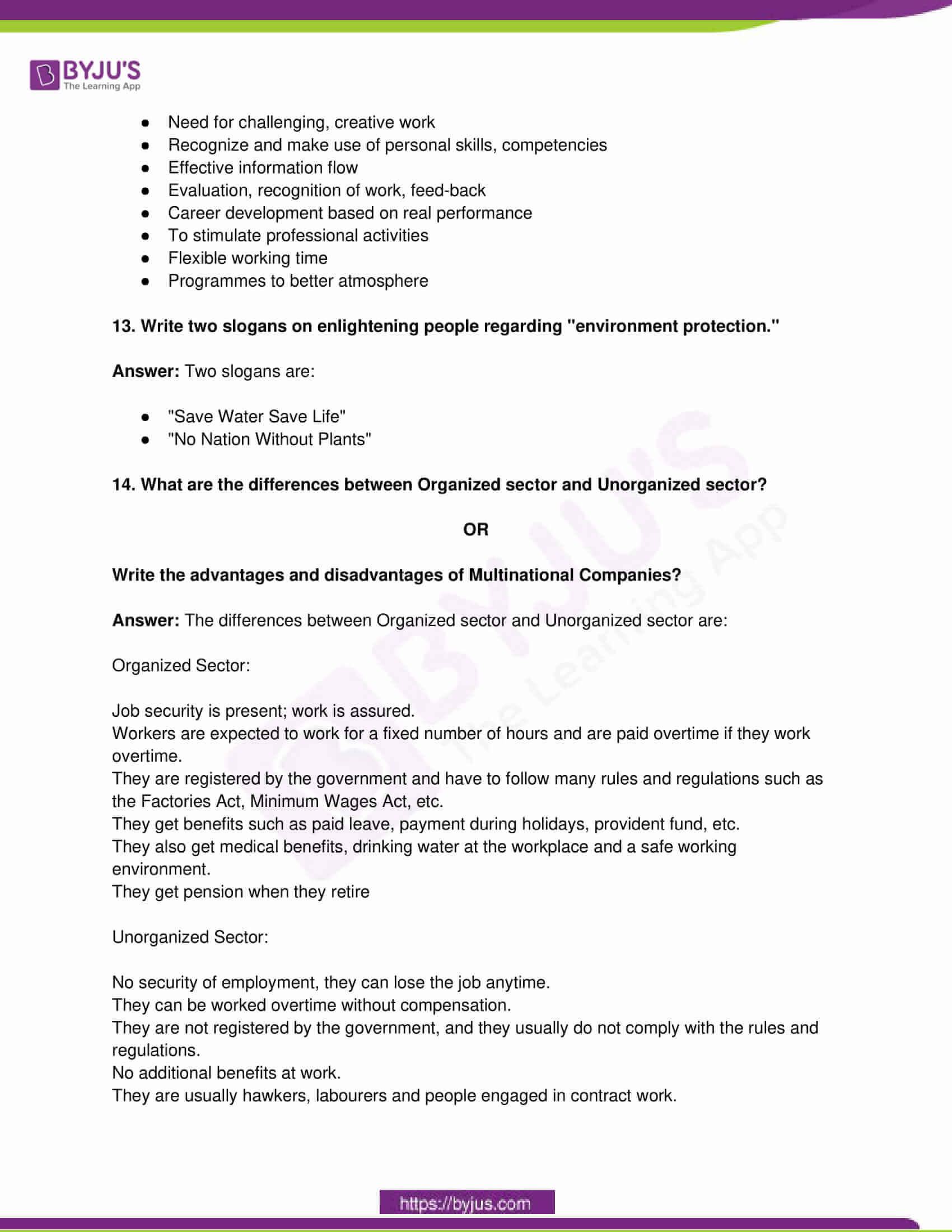



Comments